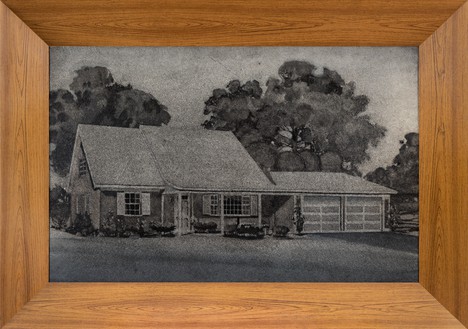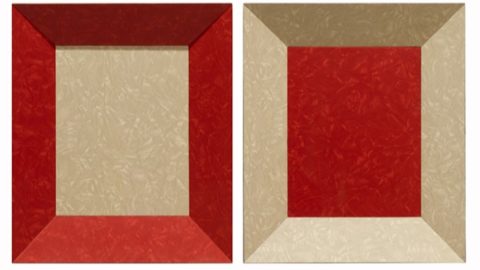Gagosian presents an exhibition (January 14 – March 11, 2021) featuring works by Richard Artschwager of a key period in his career, 1964-87.
Associated with many genres but conforming to none, Artschwager's art has been variously described as Pop, due to its incorporation of everyday objects and commercial materials; like Minimal, for its clear shapes and solid geometric presence; and as conceptual, because of its cerebral engagement with information. This rare survey of the first decades of Artschwager's varied career demonstrates his ability to rearrange the structures of perception, bringing the deceptive pictorial world of images into direct confrontation with the concretely human world of objects.
Through changes of scale and transpositions of form and material, Artschwager's works solicit a continuous re-evaluation of space and time, suggesting composed narratives and compositional complexities, often everyday and surreal. Using synthetic, commercial and industrial materials, Artschwager has transformed his sources with a deadpan visual wit that makes the familiar strange. In 1962 he began working with formica, a radically unconventional and "low" material then most closely associated with the slippery surface of lunch counters. Its glossy, typically marbled finish is recognizable from everyday life and bears an abstract resemblance to Expressionist painting. The early 60s also marked the beginning of Artschwager's experiments with Celotex, a heavily textured composite board made from compressed sugarcane fiber, which he used as the basis for his singular grisaille paintings, the rebellious industrial material that it blurred and darkened his hand-drawn lines. These compositions were often based on both arcane and mundane subjects; Interior (1964), for example, is a semi-abstract and schematic perspective image of a domestic environment, which shrinks as depth perception progresses.
Artschwager's sculptural works demonstrate the ways in which he integrated craft skills into intellectual and formal experiments in perception and composition. In Sliding Door (1964), a cabinet door casts a shadow within the pale interior of the work, generating a constantly changing pattern that shifts with the light and the viewer's movement around the object. Untitled (1965), made of formica and wood, similarly uses the curvature of a circle; while non-functional, it mimics the utilitarian aesthetic of an audio speaker or household appliance, demonstrating Artschwager's ability to meet our expectations of an object or image only to then subvert them.
A fully illustrated bilingual catalog will be published on the occasion of the exhibition, with an essay by the curator Dieter Schwarz.

Richard Artschwager was born in 1923 in Washington, DC, and died in 2013 in Albany, New York. His collections include Kunstmuseum Wolfsburg, Germany; Ludwig Museum, Cologne, Germany; Staatsgalerie Stuttgart, Germany; Center Pompidou, Paris; Tate, London; Museum of Modern Art, New York; Whitney Museum of American Art, New York; and the Art Institute of Chicago. Exhibitions include Painting Then and Now, Museum of Contemporary Art, North Miami, FL (2003); Up and Down / Back and forth, Deutsche Guggenheim Berlin (2003); Hair, Museum of Contemporary Art, Saint Louis (2010); Richard Artschwager!, Whitney Museum of American Art, New York (2012, traveled to Hammer Museum, Los Angeles; Haus der Kunst, Munich; and Nouveau Musée National de Monaco); and Punctuating Space: The Prints and Multiples of Richard Artschwager, Frances Lehman Loeb Art Center, Vassar College, Poughkeepsie, NY (2015). A retrospective of Artschwager's work curated by the late Germano Celant opened at the Museum of Modern and Contemporary Art in Trento and Rovereto, Italy in October 2019, and traveled to the Guggenheim Museum Bilbao in February 2020.
Gagosian Gallery – Via Francesco Crispi 16 – 00187 Rome





